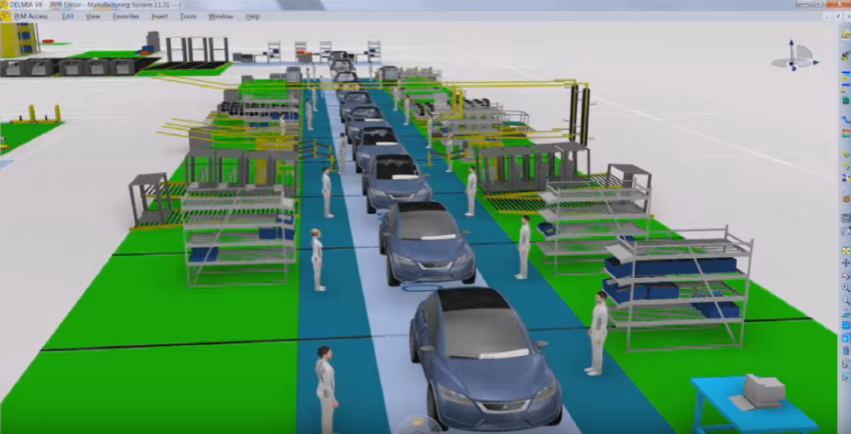
Virtual factory: Manufacturing improvements with PLM
Adam Bannaghan, technical director of Design Rule, discusses three ways that the digital continuity of product lifesycle management helps manufacturers deliver high quality innovative products with ease
No one hates being faced with a problem they weren’t expecting more than manufacturers. During the design and build process, unplanned events can increase cycle times and have a detrimental impact on the management of materials and working hours.
There is now a demand in the manufacturing sector for a system that provides real-time visual status and control, alongside product quality predictions. Enter, product lifecycle management (PLM).
PLM is used by different sectors for various reasons. For manufacturers, the virtual production element is used to improve the planning, management and optimisation of industrial operations.
The software also allows users in multiple locations to work on projects simultaneously, tracking progress and inputting operational data.
Manufacturers may not have as much paperwork to track or intellectual property to protect as other sectors, but there are three important reasons why manufacturers should invest in PLM software.
Immediate insight
When used as part of a PLM system, virtual production software can visualise the build of a product before the assembly line is in place. This means engineering and manufacturing directors can identify possible constraints and fix errors before the product reaches the manufacturing stage.
Engineers can then evaluate “what-if” scenarios months before making the commitment to production. Having a 3D visualisation of how the product interacts in the real world means designers can make changes, optimise operations and facilitate higher quality innovation.
For instance, misjudged timings are a major cause of product delay and error. Having this software in place ensures all parties developing or manufacturing a product are in sync. This synchronisation is referred to as digital continuity, where all parties have access to the same design at every stage of the design and build process.
This optimises the manufacturing process, bringing lead times forward and helps those involved spot errors before they have a serious impact.
Smoother collaboration
Interconnectivity and the industrial internet have increased the complexity of PLM requirements, especially in operations planning, management and optimisation.
Many manufacturers now run their design and build operations across multiple locations. Distance, cultural differences and diverse approaches to problem-solving can sometimes result in costly production errors if seamless communication is not possible.
By using software that bridges the gap between different locations, businesses can plan, manage and optimise industrial processes.
For example, a common problem when part measurements and specifications being are sent overseas for production is that poor translations or measurement system differences can sometimes cause costly production errors. Engineering teams can easily fix these errors in the manufacturing process, but they still cause delay, confusion and ultimately cost money.
By using 3D virtual production software, users can communicate instructions and measurements clearly as well as alter specifications during the design stage.
Optimised manufacturing
The more complex a product is, the more critical the assembly process becomes. Software that allows companies to properly plan, simulate and implement production lines can benefit all departments, from design to engineering, sales and marketing.
By implementing a digital continuity platform, all parties can start planning well in advance, bringing lead times forward and reducing the risk of missing deadlines.
Whether your company is experiencing geographical expansion, requests for more complex products or has a history of misjudged timings, implementing virtual production software, such as Dassault Systèmes’ Delmia, could prevent you from getting a nasty surprise during your next project.


